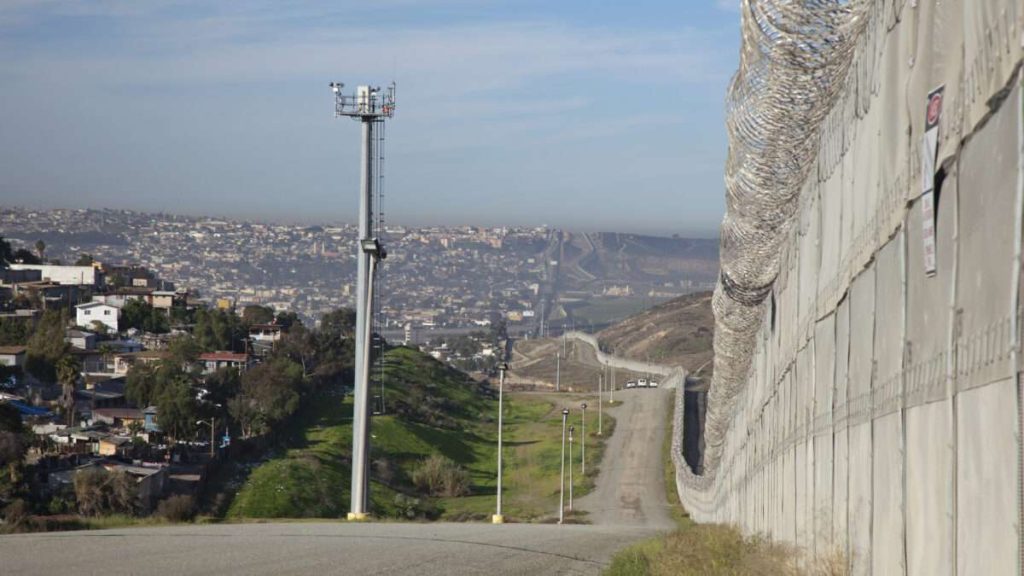Immigration is one of the more hotly debated issues in the U.S. even as the current administration lacks a clear policy of any sort. We have deep disagreements over how tightly entry to the country should be controlled and who should be admitted as new residents and possible future citizens. But what if, no matter what policy politicians finally settle on, it’s implemented with the government’s usual efficiency and fiscal responsibility? What if it looks like the train wreck that is the network of surveillance towers along the southern border, many of them inert at great expense?
A Network of Blind Surveillance Towers
“Nearly one-third of the cameras in the Border Patrol’s primary surveillance system along the southern U.S. border are not working, according to an internal agency memo sent in early October,” NBC News reported last week. “The large-scale outage affects roughly 150 of the 500 cameras perched on surveillance towers along the U.S.-Mexico border.”
This is big political news at a time when voters consistently rank immigration among their main concerns.
Part of the problem is that several federal agencies with different priorities have responsibility for these cameras. Border Patrol relies on surveillance technology to cover remote areas where its agents can’t always be present. But the Federal Aviation Administration—yes, really—handles contracts for maintaining and repairing the camera network.
The affected towers are part of the Remote Video Surveillance System, a subset of the full network of border surveillance towers. As the Electronic Frontier Foundation (EFF) detailed last year, the federal government started installing surveillance towers two decades ago through a series of projects, cancellations, restarts, and mutually incompatible technology.
“Throughout the 2010s, CBP took another run at a tower-based system, resulting in disparate tower systems…provided by different vendors that could not interact with another,” Dave Maass wrote for EFF.
It would be surprising if the federal government did anything on a reasonable budget or schedule, and the surveillance towers don’t break from tradition. For instance, just one program—the Secure Border Initiative Network—took six years to cover just a small stretch of border in Arizona.
High Costs and No Standards
“By 2010, at a cost of about $1 billion, CBP had deployed 15 SBInet tower systems along 53 miles of Arizona’s 387- mile border with Mexico,” the Government Accountability Office (GAO) noted in a 2017 report on flaws in the full network. “However, in January 2011, in response to internal and external assessments that identified concerns regarding the performance, cost, and schedule for implementing the systems, the Secretary of Homeland Security announced the cancellation of future SBInet systems.”
That plan was superseded by the Arizona Border Surveillance Technology Plan and the Southwest Border Technology Plan. The various systems together, according to The Intercept‘s Daniel Boguslaw, cost around $6 billion. They were finally consolidated in 2022 into the Integrated Surveillance Towers network, though the legacy technology continues to pose challenges in terms of age and incompatibility with other parts of the network.
Do those very expensive surveillance towers do what they’re supposed to do?
In that 2017 report, the GAO found that Border Patrol “is not yet positioned to fully quantify the impact these technologies have on its mission.” That was over a decade after surveillance towers started going up in Arizona and along the rest of the southwestern (and now also part of the northern) border. Not for the first time, the GAO urged Border Patrol to consider “developing and applying performance metrics for its border technologies, in accordance with our prior recommendation [to] help Border Patrol more fully assess its progress in implementing the Southwest Border Technology Plan and determine when mission benefits have been realized.”
Of course, it’s easier to assess a system if it’s functioning. In its annual DHS assessment published in February of this year, GAO noted of the Integrated Surveillance Towers system that Customs and Border Protection officials “said the program expects [operations and support] shortfalls of 23 percent in fiscal year 2024 and 36 percent in fiscal year 2025, which could increase the risk of obsolescence and existing towers being nonoperational.”
And now almost a third of the Remote Video Surveillance System towers are completely offline.
A History of Disappointment
This isn’t the first time the border surveillance system has come up short. Ten years ago, members of the House Committee on Homeland Security’s Subcommittee on Border and Maritime Security tore into a Customs and Border Protection official over the status and expense of surveillance towers in Arizona. They were particularly incensed that GAO advice to adopt metrics for assessing the network’s effectiveness had been ignored. Obviously, three years later it was still being ignored.
So, it’s difficult to know to what degree border security suffers when large numbers of the towers are out of service because they’re not assessed according to any standard. It’s clear, though, that Border Patrol employees are upset—both because somebody leaked a memo about the problem to NBC News, and because the Border Patrol union has been vocal “that inoperable camera towers along the border are causing serious Officer Safety and Border Security concerns.”
In other words, the various incompatible parts of the border surveillance tower program work much like everything else that government does: inefficiently, expensively, and unaccountably. The various contractors who pocketed payments along the way to erect the towers probably made out rather well, as is usually the case. But it’s not obvious what benefit Americans derived from the billions of dollars spent.
That’s not to say that nothing should be done about the mess around immigration. Many Americans are understandably concerned about what appears to be a free-for-all at the border and the lack of any guiding principles whatsoever that it represents.
But we shouldn’t be surprised when the implementation of an actual immigration and border policy, once one has been decided, looks a lot like expensive towers standing in the desert, doing nothing.
The post One-Third of Expensive Border Surveillance Towers Don’t Work appeared first on Reason.com.







